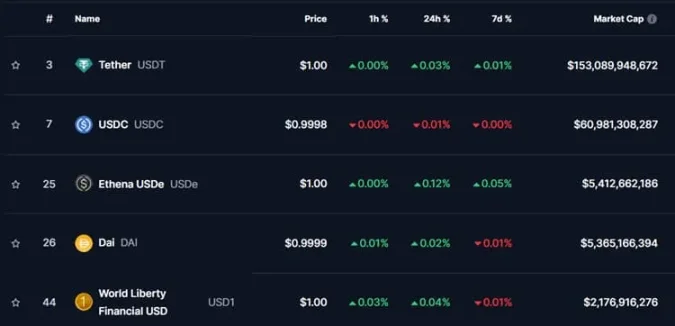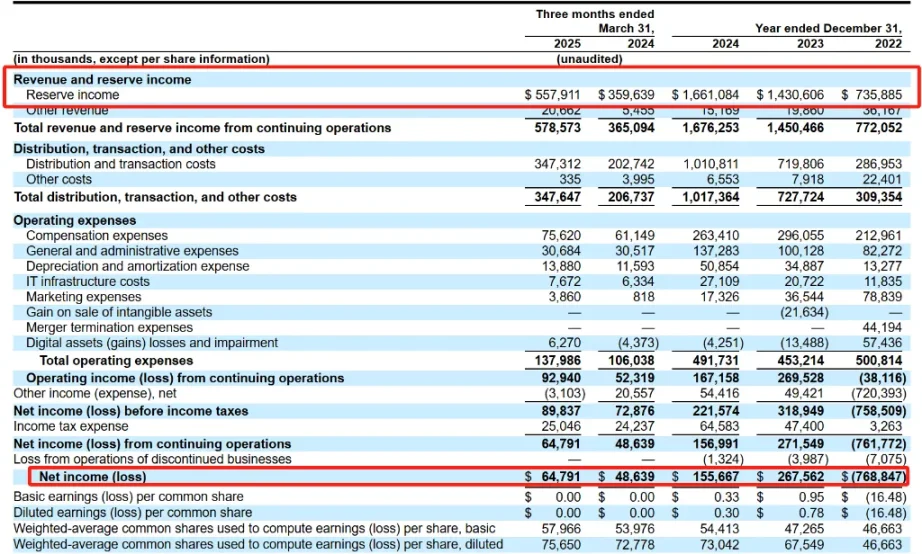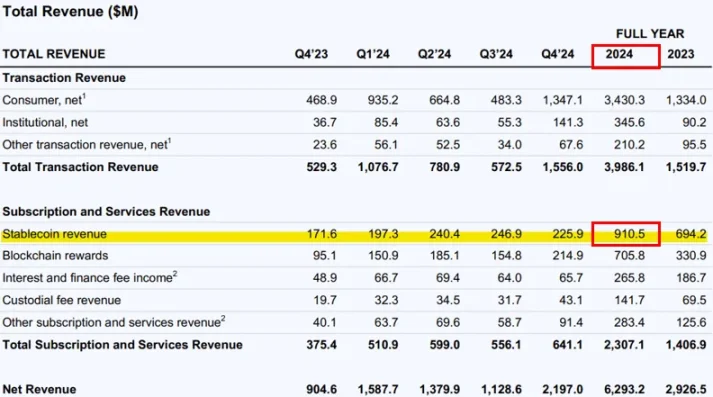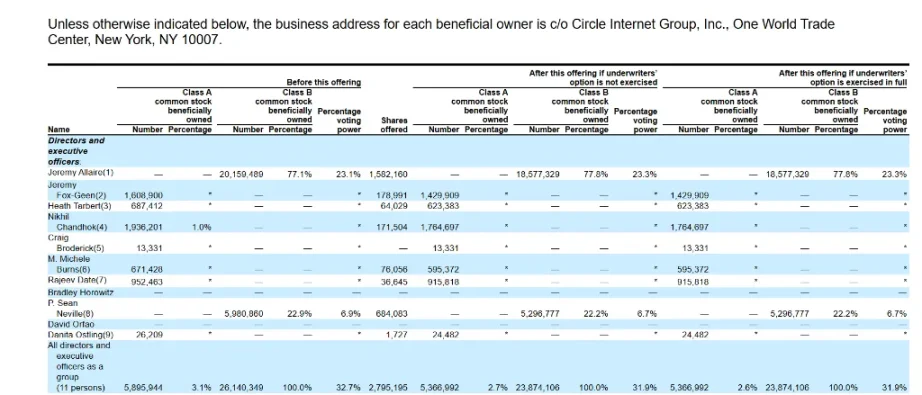Under the glamorous facade of Wall Street giants rushing to enter the market, Circle is also facing structural challenges.
Written by: Xu Chao, Wall Street Insights
This Thursday, the cryptocurrency market will witness the most important IPO event of the year.

(Image generated by Doubao AI with prompts of opportunity and crisis)
Circle Internet Group—issuer of the $60 billion USDC stablecoin—will be listed on the New York Stock Exchange. The company will issue 32 million Class A shares, with a price range of $27-28, expecting to raise up to $896 million, with the stock ticker CRCL. The company will finalize pricing on Wednesday evening and begin trading the next day.

This IPO is highly sought after on Wall Street. Circle's target valuation has been raised from the previous $5.65 billion to $7.2 billion. BlackRock is leading with a 10% stake, and Ark Investment has also expressed interest in investing up to $150 million.
However, beneath the glamorous facade of Wall Street giants rushing to enter the market, Circle is also facing structural challenges.
The seemingly "perfect" money-printing model
Stablecoins have quietly become the backbone of the cryptocurrency market, increasingly intertwined with traditional finance. In 2024, stablecoin trading volume is expected to reach $27.6 trillion, nearly 8% higher than the combined trading volume of Visa and Mastercard.
Currently, the total market capitalization of stablecoins has reached $248 billion, with Circle's USDC holding a 25% market share, second only to Tether's USDT at 61%, with a total market cap of $60 billion. Circle's EURC ranks first among euro-backed stablecoins, with a market cap of $224 million.

Circle's advantage lies in its regulatory compliance.
In the U.S., USDC positions itself as a compliant bridge between the cryptocurrency ecosystem and traditional finance. In the EU, the implementation of MiCA—and the resulting delisting of non-compliant stablecoins like USDT from major regulated exchanges—has paved the way for USDC to become the leading stablecoin in the region.
Circle's business model is simple and enticing: the company issues USDC stablecoins pegged 1:1 to the dollar and invests the $60 billion deposited by users in short-term U.S. Treasury bonds to earn risk-free returns.
The company primarily invests in U.S. Treasury bonds (85% managed by BlackRock's Circle Reserve Fund) and cash (10-20% held in globally systemically important banks). This model is highly profitable, generating approximately $1.6 billion in interest income ("reserve income") in 2024, accounting for 99% of Circle's total revenue.
Coinbase "sucking blood"
However, behind the seemingly "perfect" money-printing model, Circle's financial data presents a dual face of growth and pressure: in 2024, Circle's total revenue and reserve income reached $1.676 billion, a year-on-year increase of 16%, steadily rising from $1.450 billion in 2023.
However, net profit fell from $268 million to $156 million, a decline of 42%.

Behind the contradictory financial data, the surge in "distribution, transaction, and other costs" is a major influencing factor, with the profit-sharing agreement between Circle and Coinbase being a key contributor.

The collaboration between Coinbase and Circle began in 2018: the two established the Centre Consortium to create USDC. In 2023, after the dissolution of the alliance, Coinbase acquired equity in Circle, while Circle gained full control of the USDC ecosystem.
However, this split did not end the cash flow distribution between the two, as both companies continue to share the interest income from the reserves supporting USDC. According to Circle's S-1 filing, the revenue-sharing agreement between Circle and Coinbase is as follows:
USDC on the Coinbase platform: Coinbase receives 100% of the reserve income.
USDC on non-Coinbase platforms: Coinbase and Circle each receive 50% of the reserve income.

As of the first quarter of 2025, USDC on the Coinbase platform accounted for about 23% of the total circulation. This ratio reflects Coinbase's significant position in the USDC ecosystem and its role as the primary custody platform.
According to data disclosed by Coinbase, in 2024, Coinbase earned $908 million from USDC-related businesses, accounting for about 14.5% of its net income.

Coinbase also has decision-making power over Circle's business partners. If Circle wants to sign new revenue-sharing or distribution agreements with third parties, it needs to obtain Coinbase's approval.
Some analysts believe that the "close" cooperation terms between the two may lay the groundwork for Coinbase to acquire Circle in the future.
Hidden "fatal" flaws
In addition to the high "distribution" costs, Circle's seemingly "money-printing" business model has serious flaws.
First, Circle's revenue is highly dependent on interest rate performance. With a 4.75% return rate, $60 billion in USDC could yield about $2.85 billion, which is approximately the income Circle can earn without taking any risks.
However, problems arise when interest rates decline. The cost of maintaining these returns (in terms of risk) becomes higher. Taking on excessive risk can be very tempting. There is also pressure from competitors who may be willing to sacrifice a large portion of reserve income for market share.
At the same time, Circle's performance is closely tied to the volatile broader cryptocurrency market.
Due to the collapse of the Terra and FTX platforms, Circle lost $768.8 million in 2022; in 2023, following the bankruptcy of Circle's partner Silicon Valley Bank, the selling pressure on USDC increased, directly leading to a halving of USDC's market cap (coinciding with the timing of the agreement with Coinbase).
External competitive pressure intensifies
Ordinary stablecoins backed by the dollar have no entry barriers. Providers need to be more creative than their competitors to make their stablecoins the industry standard.
ARK believes that by 2030, the scale of stablecoins will grow from the current approximately $250 billion to $1.4 trillion. This may depend on how much "floating income" stablecoin issuers agree to share in the form of "incentives" to win or capture market share.
As the regulatory environment clarifies, Circle may face more intense competition. Tech giants like Amazon and Google may launch their own stablecoins, while banks like Bank of America, Citigroup, and JPMorgan are also exploring joint issuance of stablecoins.
PayPal has already launched its own stablecoin and plans to return most of the reserve income to users. This trend of "competing to give benefits" may compress the profit margins of the entire industry.
The timing of the IPO couldn't be better
Despite facing various internal and external issues, Circle's IPO timing is indeed "just right."
Supporters argue that stablecoins are becoming the de facto digital dollar—especially in an environment where the U.S. is increasingly hostile to central bank digital currencies (CBDCs). The potential market for stablecoins encompasses global remittances, institutional payments, and DeFi integration. The infrastructure and regulatory positioning that Circle has built may give it a competitive edge.
As Benjamin Billarant, founder of Balthazar Capital (an asset management company with significant investments in cryptocurrency-related stocks), commented:
Circle's IPO timing couldn't be better. We have reached a critical turning point for the mainstream adoption of stablecoins. Once the GENIUS Act is passed, it will provide the regulatory transparency needed to unleash its full potential—and Circle, with its compliance-first philosophy, has a unique advantage to capitalize on this opportunity.
In fact, the most comprehensive stablecoin legislation in the U.S. to date—the bipartisan GENIUS Act—was passed in the Senate on May 21 and is currently under review in the House. This is undoubtedly an excellent timing for Circle's IPO.
The high valuation of $7.2 billion also tells a similar "story" (Circle's PE valuation has surpassed that of credit card giant Visa): USDC is just the beginning of tokenization.
While Circle currently relies on demand from the cryptocurrency market, in the future, stablecoins will sweep the globe as a smoother and more efficient payment method than what is currently offered.
In addition to ordering pizza at home or purchasing goods from abroad, there is potential to build new applications and financial products on the same track. As the Trump administration pushes for stablecoins to enter the mainstream, all of this will expand the demand for USDC and generate more fee income.
Is the $7.2 billion valuation reasonable? The market will ultimately provide the answer. But one thing is certain: whether Circle can timely transform from "easy" interest-driven income to more challenging product-driven revenue will determine its long-term fate.
Major shareholders sell, Wall Street buys
Interestingly, existing shareholders of Circle are using this IPO to cash out on a large scale.
According to the prospectus, shares sold by existing shareholders account for 60% of the total issuance, far exceeding the typical tech IPO.
According to the company's prospectus, Circle CEO Jeremy Allaire will sell 8% of his shares, and several well-known venture capital firms also plan to reduce their holdings by about 10%. Although internal shareholders still retain a significant amount of shares, the large-scale cash-out may send complex signals to the market.

In tech company IPOs, it is extremely rare for the issuance volume from existing shareholders to exceed the company's issuance volume.
Meta is one of the few exceptions. The social network raised a record $16 billion in its massive IPO in 2012, of which 57% of the shares were sold by existing shareholders.
免责声明:本文章仅代表作者个人观点,不代表本平台的立场和观点。本文章仅供信息分享,不构成对任何人的任何投资建议。用户与作者之间的任何争议,与本平台无关。如网页中刊载的文章或图片涉及侵权,请提供相关的权利证明和身份证明发送邮件到support@aicoin.com,本平台相关工作人员将会进行核查。




